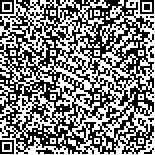| 摘要: |
| [摘要] 目的 探讨非辅助生殖妊娠单绒毛膜双羊膜囊(MCDA)双胎发生先天性心脏病(CHD)的风险。方法 采用回顾性队列研究,纳入2014-01~2019-12深圳市妇幼保健院新生儿重症监护室收治的新生儿,其中单胎6 107例,双绒毛膜双羊膜囊(DCDA)双胎834例,MCDA双胎590例,MCDA双胎合并双胎输血综合征(TTTS)84例。比较分析四组的CHD发生率和相对危险度,以及四组CHD患者的发病类型。结果 单胎组、DCDA双胎组、MCDA双胎组及MCDA双胎合并TTTS组的CHD发生率分别为3.01%、2.88%、5.08%和21.43%,四组间比较差异有统计学意义(χ2=94.676,P=0.000)。以单胎组为参照,MCDA双胎组和MCDA双胎合并TTTS组发生CHD风险是单胎组的1.69倍和7.11倍;以DCDA双胎组为参照,MCDA双胎组和MCDA双胎合并TTTS组发生CHD风险是DCDA双胎组的1.77倍和7.45倍。单胎组CHD类型以室间隔缺损(39.67%)和其他类型CHD(35.33%)为主;DCDA双胎组以室间隔缺损为主(66.67%);MCDA双胎组和MCDA双胎合并TTTS组以其他类型CHD为主(46.67%,44.44%)。结论 MCDA双胎,尤其是MCDA双胎合并TTTS发生CHD的风险较高,临床医师在对这类患儿诊疗时应注意CHD的发生。 |
| 关键词: 双胎 先天性心脏病 风险 |
| DOI:10.3969/j.issn.1674-3806.2020.11.09 |
| 分类号:R 725.4 |
| 基金项目:深圳市“医疗卫生三名工程”资助项目(编号:SZSM201612045) |
|
| Study on the risk of congenital heart disease in non-assisted reproductive technology pregnancy with monochorionic diamniotic twins |
|
CHEN Chun, SUN Hong-yan, ZHANG Su-er, et al.
|
|
Department of Neonatology, Shenzhen Maternity and Child Healthcare Hospital, Guangdong 518028, China
|
| Abstract: |
| [Abstract] Objective To investigate the risk of congenital heart disease(CHD) in non-assisted reproductive technology pregnancy with monochorionic diamniotic(MCDA) twins. Methods A retrospective cohort study was conducted to include the neonates admitted to the Neonatal Intensive Care Unit of Shenzhen Maternity and Child Healthcare Hospital from January 2014 to December 2019, including 6107 cases of single births, 834 cases of dichorionic diamniotic(DCDA) twins, 590 cases of MCDA twins and 84 cases of MCDA twins complicated with twin-to-twin transfusion syndrome(TTTS). The incidence and relative risk of CHD were compared among the four groups, as well as the disease types of CHD patients in the four groups. Results The incidence rates of CHD were 3.01%, 2.88%, 5.08%, and 21.43% in the singleton group, DCDA twins group, MCDA twins group and MCDA twins complicated with TTTS group, respectively. The difference was statistically significant among the four groups(χ2=94.676, P=0.000). When the singleton group was taken as reference, the risk of CHD in the MCDA twins group and the MCDA twins complicated with TTTS group was 1.69 and 7.11 times higher than that of the singleton group; when the DCDA twins group was taken as reference, the risk of CHD in the MCDA twins group and the MCDA twins complicated with TTTS group was 1.77 and 7.45 times higher than that in the DCDA twins group. The type of CHD in the singleton group was mainly ventricular septal defect(39.67%) and the other types of CHD(35.33%); the main type of CHD in the DCDA twins group was ventricular septal defect(66.67%); the MCDA twins group and the MCDA twins complicated with TTTS group was the other types of CHD(46.67%, 44.44%). Conclusion MCDA twins, especially MCDA twins complicated with TTTS, have a higher risk of CHD. Clinicians should pay attention to the occurrence of CHD in the diagnosis and treatment of such children patients. |
| Key words: Twins Congenital heart disease(CHD) Risk |

